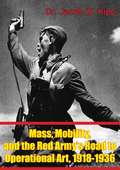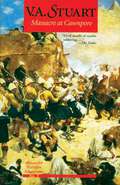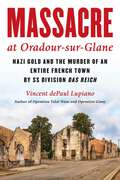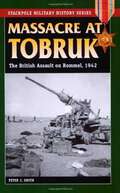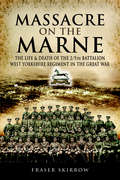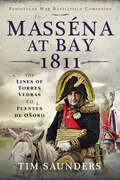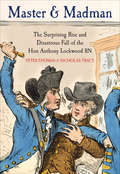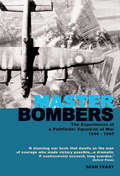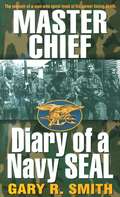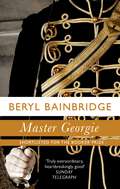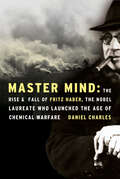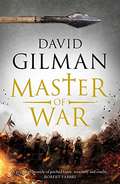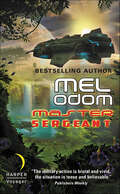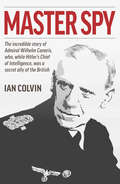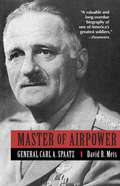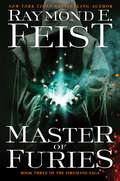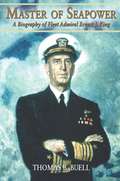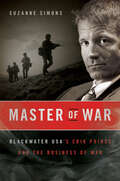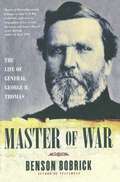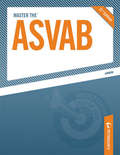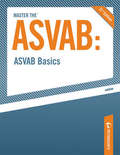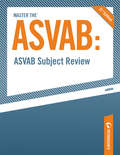- Table View
- List View
Mass, Mobility, And The Red Army’s Road To Operational Art, 1918-1936
by Dr Jacob W. KippThe first requirement for this paper is to deal with the problem of exactly what we mean by the three terms employed in the title. Mass in the Russian context has a double meaning. To some it unquestionably calls to mind the image of the Russian steamroller, which provided nightmares of Schlieffen and his planners in the decades before World War I. A simple process of extrapolation based upon the size of Russia's standing army, the number of conscripts being inducted in any year under the universal military service statute, and the Empire's total population provided a rough estimate of the total number of rifles and bayonets which the tsar could put into the field. The tsarist government's adoption of the Grand Program for rearmament in 1912 thus threatened to change the military balance on the continent. Those forces would mobilize slowly, but, like a steamroller, their momentum would carry all before them.
Massachusetts Beautiful Part 1 (Massachusetts Beautiful #1)
by Wallace NuttingWritten and illustrated as one of Wallace Nutting's noted "State Series". A Historical photographic tour highlighting the scenery, older homes and landmarks, supplemented with engravings. In all 304 illustrations covering all the counties in Massachusetts.
Massachusetts Beautiful Part 2 (Massachusetts Beautiful #2)
by Wallace NuttingWritten and illustrated as one of Wallace Nutting's noted "State Series". A Historical photographic tour highlighting the scenery, older homes and landmarks, supplemented with engravings. In all 304 illustrations covering all the counties in Massachusetts.
Massacre at Cawnpore
by V. A. Stuart1857, Cawnpore: With savage mutineers laying relentless siege to its very gates, the British garrison at Cawnpore, in the north of pre-partitioned India, holds on with little more than will. A ragged band of exhausted soldiers defending some 400 frightened women and hungry children in a crumbling outpost, they wait behind frail mud walls, under a scorching sun, for the uncertain arrival of relief troops.Meticulously researched and historically accurate, Stuart&’s tragic story from the Indian Mutiny resonates in the struggles against religious fanaticism of our own time. Intense and inspiring, it describes the heroism of a handful of British soldiers and civilians who confronted swarms of vengeful sepoys and all but hopeless odds, as seen through the eyes of Stuart&’s characters, Sheridan and his wife Emmy.
Massacre at Oradour-sur-Glane: Nazi Gold and the Murder of an Entire French Town by SS Division Das Reich
by Vincent dePaul LupianoThe massacre at Oradour-sur-Glane on June 10, 1944, is recognized yearly throughout France with the same profundity as the attacks on Pearl Harbor and the Twin Towers in the United States. The Oradour Massacre is taught in school in France and the anniversary is commemorated every year. Today, Oradour is a destination for people interested in one of the most horrific events in French history. Each year, the devastated village attracts over 300,000 visitors worldwide.On June 8, 1944, 15,000 men and 209 tanks and self-propelled guns of the Das Reich 2 Panzer Division rolled out of Montauban in southern France and began an ordered 450-mile march that ended at Normandy more than two weeks later. While in Montauban, a battalion from Das Reich surrounded Oradour-sur-Glane, massacred 642 men, women, and children, and razed the village to the ground. Das Reich became one of the most dreadful legends in the history of France and World War II.This is the story of the Oradour massacre and its real cause: how two SS officers—a general and a major—&“acquired&” one million dollars&’ worth of gold ingots while encamped at nearby Montauban, and how that led to the massacre in 1944.
Massacre at Tobruk (Stackpole Military History Series)
by Peter C. SmithMinute-by-minute account of the offensive. Covers both the British attackers and the German defenders. Explains how and why the assault failed so badly.
Massacre on the Marne: The Life & Death of the 2/5th Battalion West Yorkshire Regiment in the Great War
by Fraser SkirrowMassacre on the Marne is a graphic reconstruction of the experiences of a small closely knit group of fighting men - the 2/5th Battalion of the West Yorkshire Regiment - in the Great War. These men were not elite regular troops or Kitcheners' Men - they were Territorials. In many ways they were typical of the men who fought on the Western Front. Using the words of the men themselves, taken from their letters, diaries and memoirs as well as quotations from the reports and dispatches of the time, Fraser Skirrow records how they learnt the painful lessons of trench warfare and became a highly efficient fighting unit. He also records how their hard-won efficiency was not enough to save them, for the Second Battle of the Marne in 1918 was their last - in a few terrible hours they were virtually wiped out. This meticulously researched history allows the reader to follow the careers of these men through every phase of the war, from recruitment to the final tragedy, and it makes compelling reading.
Masséna at Bay 1811: The Lines of Torres Vedras to Funtes de Oñoro (Peninsular War Battlefield Companion)
by Tim SaundersThe 1810 French invasion of Portugal, commanded by the veteran marshal André Masséna, who was known to Napoleon as the ‘Spoilt Child of Victory’ has been well covered by historians. Conversely, the shock revelation of the presence of the Lines of Torres Vedras baring the French Army of Portugal’s way to their objective of Lisbon, and numerous combats through to the Battle of Funtes de Oñoro, has been frequently and unjustifiably glossed over. This book, starting with the occupation of the Lines of Torres Vedras, which were at the heart of Wellington’s Peninsular strategy from October 1809-1812, is the story of Wellington’s pursuit of Masséna back to Spain. This was a time when the Peninsular Army was still being forged and Wellington was refining his own art of war. In addition, 1810-1811 was a period when the outcome of the struggle in Iberia was still far from certain, and Wellington could not manoeuvre with the same confidence in the outcome as he could in future years. The series of combats fought at Pombal, Redhina, Foz da Arounce and Sabugal while Masséna was at bay, though not categorised as ‘general actions’, were of the same scale and significance as those of 1808; Roliça and Vimiero. The general action at Funtes de Oñoro was one of the most significant of Wellington’s victories, but he confessed that ‘If Bony had been here we would have been beat’.
Master & Madman: The Surprising Rise and Disastrous Fall of the Hon Anthony Lockwood RN
by Nicholas Tracy Peter ThomasAnthony Lockwoods story is at the heart of the Georgian Navy though the man himself has never taken centre stage in its history. His naval career described by himself as twenty five years incessant peregrination followed a somewhat erratic course but almost exactly spanned the period of the French wars and the War of 1812. Lockwood was commended for bravery in action against the French; was present at the Spithead Mutiny; shipwrecked and imprisoned in France; appointed master attendant of the naval yard at Bridgetown, Barbados, during the year the slave trade was abolished; and served as an hydrographer before beginning his three-year marine survey of Nova Scotia and the Bay of Fundy. Against the odds he managed to finesse a treasury appointment as Surveyor General of New Brunswick and became the right hand man of the Governor, General Smyth.Deeply ingrained in his character, however, was a democratic determination that was out of step with the authoritarian character of the Navy and the aristocratic one of New Brunswick. His expectation of social justice verged on madness, and when he finally succumbed to lunacy it was in the defence of democracy. The turbulence of the times inspired Lockwood to stage a one-man coup detat which ended with him being jailed and shipped back to London to live out his days as a pensioner and mental patient. Truly a dramatic rise and a tragic fall.
Master Bombers: The Experiences of a Pathfinder Squadron at War, 1942–1945
by Sean FeastThe wartime exploits and experiences of an RAF bomber pathfinder squadron are recounted in this WWII history—&“A stunning war book&” (Oxford Times, UK). Formed in July 1942, the Pathfinder Force was the corps d&’élite of the Royal Air Force&’s Bomber Command. The Squadrons of the PFF were tasked with marking targets and leading bomber formations to the right place at the right time. And the best of the force formed the crews of the master bombers, the aircraft in charge of the whole attack. It took nerves of steel for the crew to linger high over the target area, often for hours, in constant fear of attack from fighters or flak. In Master Bombers, aviation historian Sean Feast shares the wartime stories of the men and women of No. 582 Squadron. This bomber pathfinder squadron was formed in April of 1944 and began operations with a night raid on Occupied France a week later. The aircrew and supporting staff of No. 582 distinguished themselves in numerous operations, with one pilot, Ted Swales, winning a posthumous Victoria Cross over Pforzheim.
Master Chief: Diary of a Navy Seal
by Alan Maki Gary SmithIT'S HARD TO BE HUMBLEWHEN YOU'RE SERVING WITH THE VERY BESTFor UDT/SEAL team member Gary R. Smith, just being part of an elite military organization wasn't enough--he had to be in the thick of the action. Because in bloody, violent Vietnam he learned there's no stronger bond than the one forged in the gut-wrenching chaos of combat. During ambushes, PRU combat patrols, and extractions from hot LZs, Smith depended on the courage and sacrifice of his fellow SEALs, who time and again placed their own lives on the line so that he might survive.In MASTER CHIEF, Gary Smith covers his fifth tour in Vietnam and his rise to the highest enlisted rank, master chief petty officer. Characteristically, Smith holds nothing back when describing life during wartime in one of the world's toughest fighting units.Based on the author's own experience, as well as his own and others' diaries, letters, and documents, and on extensive interviews, MASTER CHIEF is an outstanding memoir of a warrior who answered the call to arms whenhis country needed him.From the Paperback edition.
Master Georgie: A Novel
by Beryl BainbridgeShortlisted for the Man Booker Prize: A masterwork of love, guilt, and friendship set in Victorian Liverpool and Eastern Europe during the Crimean War. Photography is the common thread weaving together three different points of view that span the years from 1846 to 1854. The first "plate" opens with the account of Myrtle, a young orphan girl, as she is taking a photograph of her adoptive father, Mr. Hardy, who has just passed away in Liverpool. The sudden and unsavory circumstances of Mr. Hardy's death bind Myrtle and the other characters of this story together as history propels them toward the frontlines of the Crimean War. Myrtle's adoptive brother, George Hardy, or "Master Georgie" as he is called, is an amateur photographer and handsome surgeon. When he heads east in 1854 to offer his medical services to the conflict raging between Russia and Turkey--a war it seems England will inevitably enter--Myrtle follows him, as does George's brother-in-law, a high-minded geologist named Dr. Potter. The group travels to Valetta, Malta, and Constantinople, then on to Varna, where George will be stationed. As the caravan proceeds, the group crosses paths with Pompey Jones, a street urchin, photographer's assistant, and sometimes fire breather, who is a dear friend of George's and was with him the day his father died. It soon becomes clear that George's affections are torn between Pompey and Myrtle. Dr. Potter, meanwhile, pines for the affections of his wife, who is hundreds of miles away. The conflicting emotions in the travelers' hearts are amplified by the misery, disease, and filth they must endure--as well as the other, more unthinkable, horrors of war. A sparse yet vivid historical novel, Master Georgie delves into themes of distorted truth, the psychological effects of war, unrequited love, and the will to survive. Called "a true novelist's novel" by the Guardian, it was shortlisted for the Man Booker Prize. This ebook features an illustrated biography of Beryl Bainbridge including rare images from the author's estate.
Master Georgie: Shortlisted for the Booker Prize, 1998
by Beryl BainbridgeSHORTLISTED FOR THE BOOKER PRIZE 1998SHORTLISTED FOR THE GUARDIAN FICTION PRIZEWINNER OF THE JAMES TAIT MEMORIAL PRIZE FOR FICTIONWINNER OF THE WH SMITH BOOK OF THE YEAR AWARDWhen Master Georgie - George Hardy, surgeon and photographer - sets off from the cold squalor of Victorian Liverpool for the heat and glitter of the Bosphorus to offer his services in the Crimea, there straggles behind him a small caravan of devoted followers; Myrtle, his adoring adoptive sister; lapsed geologist Dr Potter; and photographer's assistant and sometime fire-eater Pompey Jones, all of them driven onwards through a rising tide of death and disease by a shared and mysterious guilt.Combining a breathtaking eye for beauty with a visceral understanding of mortality, Beryl Bainbridge exposes her enigmatic hero as tenderly and unsparingly as she reveals the filth and misery of war, and creates a novel of luminous depth and extraordinary intensity.
Master Mind: The Rise & Fall of Fritz Haber, the Nobel Laureate Who Launched the Age of Chemical Warfare
by Daniel Charles“The dramatic life of a German Jewish scientist caught, of his own will, between the promise of science and the annihilation of war.” —Roald Hoffmann, chemist and writerFRITZ HABER—a Nobel laureate in chemistry, a friend of Albert Einstein, a German Jew and World War I hero—may be the most important scientist you have never heard of. The Haber-Bosch process, which he invented at the turn of the twentieth century, revolutionized agriculture by converting nitrogen to fertilizer in quantities massive enough to feed the world. The invention has become an essential pillar for life on earth; some two billion people on our planet could not survive without it. Yet this same process supplied the German military with explosives during World War I, and Haber orchestrated Germany’s use of an entirely new weapon—poison gas. Eventually, Haber’s efforts led to Zyklon B, the gas later used to kill millions—including Haber’s own relatives—in Nazi concentration camps.Master Mind is a thought-provoking biography of this controversial scientist, a modern Faust who personifies the paradox of science, its ability to create and to destroy. It offers a complete chronicle of his tumultuous and ultimately tragic life, from his childhood and rise to prominence in the heady days of the German Empire to his disgrace and exile at the hands of the Nazis; from early decades as the hero who eliminated the threat of starvation to his lingering legacy as a villain whose work led to the demise of millions.“A fascinating tale of science, history, politics, and antisemitism . . . exceptionally compelling reading.” —Deborah Lipstadt, author of Denying the Holocaust
Master Of War
by David GilmanAmid the carnage of the 100 Years War – the bloodiest conflict in medieval history – a young English archer confronts his destiny... <p><p> England, 1346: For Thomas Blackstone the choice is easy – dance on the end of a rope for a murder he did not commit, or take up his war bow and join the king's invasion. <p> As he fights his way across northern France, Blackstone learns the brutal lessons of war – from the terror and confusion of his first taste of combat, to the savage realities of siege warfare. <p> Vastly outnumbered, Edward III's army will finally confront the armoured might of the French nobility on the field of Crécy. It is a battle that will change the history of warfare, a battle that will change the course of Blackstone's life, a battle that will forge a legend.
Master Sergeant: The Makaum War: Book One (The Makaum War #1)
by Mel OdomFans of classics like Starship Troopers and The Forever War--as well as modern masters like Ian Douglas, Jack McDevitt, B.V. Larson, and Marko Kloos—will be sucked into Mel Odom’s military science fiction series, the Markaum War, starting with Master Sergeant.They call it The Green Hell. A maze of tangled jungle, the planet Makaum is one of the most dangerous places in the universe. And for Terran Military Master Sergeant Frank Sage, it is now home.The war between the Terrans and the Phrenorians rages, and both sides have their sights set on Makaum. If the planet's rich resources fall into enemy hands it could mean devastation for the Terran Army. To ensure that doesn't happen, Sage is sent to assess the Makaum troops and bring them in line with Terran Military standards. But soon after arriving at his post, he realizes the Phrenorians are not the only threat. Heading up a small but fearless unit, Sage must stop a brewing civil war with the power to unleash a galactic cataclysm unlike anything ever seen.
Master Spy
by Ian ColvinMaster Spy, first published in 1951, recounts the career of Admiral Wilhelm Canaris, who served as Hitler's Chief of Intelligence for nine years, but who was a quiet supporter of the German resistance to Hitler. Charming, exacting, mistrustful, and soft-spoken, Canaris became an Admiral during the WWI, but officially entered the Abwehr (Security Service) in 1935 of which he was later to become head. The book details the military and diplomatic interchanges in which he took part, including the incidents in which Canaris sabotaged and betrayed German plans, from the Munich pact to the proposed invasion of England and throughout the war, until his deposition by Hitler in 1944, and his execution in 1945. Perhaps most importantly, Canaris personally talked General Franco out of entering the war on Germany’s side, arguing that he would be aligning himself with the wrong side. This prevented any assault on Gibraltar and kept the Mediterranean open for allied shipping. Without Canaris, the allies would have had significant difficulty in launching their North African, Sicilian or Italian campaigns.After Stauffenberg’s July 20, 1944 bomb plot against Hitler, the Canaris group was implicated, arrested and transferred to various concentration camps. In September 1944, incriminating documents were found in the safe of Abwehr officer Werner Schrader following that officer’s July 28, 1944 suicide. Later, Canaris’ complete personal diary was found in another safe at Zossen. The diaries made clear that Canaris had been playing a double game against the Nazis since before the war, enraging Hitler. On April 9, 1945, Canaris and several other members of the Abwehr resistance circle were put on trial in an SS kangaroo court and were hung at KZ Flossenburg on Hitler’s direct orders.Author Ian Colvin, a correspondent of the London News Chronicle, had worked in pre-war Berlin where he made secret contacts with anti-Nazis. He was later expelled from Germany.
Master of Airpower: General Carl A. Spatz
by David MetsMaster of Airpower recounts the life of General Carl "Tooey" Spaatz. He helped formulate the U.S. "strategic airpower" military doctrine in WWII and, in 1947, became chief of staff of the Air Force, a newly independent arm of the military. Master of Airpower offers a great history lesson about WWII and the U.S. Air Force.
Master of Furies: Book Three of the Firemane Saga (Firemane Saga, The #3)
by Raymond E FeistFrom King of Ashes to Queen of Storms, it’s all built up to this—the thrilling conclusion to legendary New York Times bestselling author Raymond E. Feist’s epic Firemane saga.War has swept across Marquensas. Ruthless raiders have massacred the inhabitants of Beran’s Hill, including Gwen, the beloved wife of Declan Smith. Hollow of heart, his hopes burned to ashes, Declan swears to track down and destroy the raiders, an ambition shared by Baron Daylon Dumarch, whose family was massacred as they fled the capital.Meanwhile Hava, whose gift for piracy has seen her acquire the treasure ship Borzon’s Black Wake and the swift Azhante sailing vessel, Queen of Storms, and won her the name of “the Sea Demon,” is closing in on the whereabouts of those who unleashed the murderous hordes.Her husband, Hatushaly, the last remaining member of the ruling family of Ithrace, the legendary Firemanes, seeks to control the magical powers he has inherited. He is able now to visualize and even travel among the filaments of energies that power all existence: the furies. But will he be able to channel his magic in time to combat the deepest, darkest threat the world of Garn has ever faced?
Master of Seapower
by Thomas B. BuellThis is the first time in paperback for this standard biography of Fleet Admiral Ernest J. King, who was the controversial architect of the American victory in the Pacific. Once asked if it was he who said, 'When they get in trouble they send for the sonsabitches,' King replied that he was not, but that he would have said it if he had thought of it. Never accused of having a warm personality, Ernest J. King commanded the respect of everyone familiar with his work. His is one of the great American naval careers, his place in history forever secured by a remarkable contribution to the Allied victory in World War II . 'Lord how I need him,' wrote Navy Secretary Frank Knox on December 23, 1941, the day he summoned King to take control of the Navy at its lowest point, in the aftermath of Pearl Harbor.
Master of War: Blackwater USA's Erik Prince and the Business of War
by Suzanne Simons“Suzanne Simons is a masterful storyteller. But make no mistake—Master of War is not a work of fiction….A powerful and true account.”—Wolf Blitzer, anchor, CNN’s The Situation RoomMaster of War is the riveting true story of Eric Prince, the ex-Navy SEAL who founded Blackwater and built the world’s largest military contractor, privatizing war for client nations around the world. A CNN producer and anchor, Suzanne Simons is the first journalist to get deep inside Blackwater—and, as a result of her unprecedented access, Master of War provides the most complete and revelatory account of the rise of this powerful corporate army and the remarkable entrepreneur who brought it into being, while offering an eye-opening, behind-the-scenes look at the wars in Iraq and Afghanistan.
Master of War: The Life of General George H. Thomas
by Benson BobrickIn this revelatory, dynamic biography, one of our finest historians, Benson Bobrick, profiles George H. Thomas, arguing that he was the greatest and most successful general of the Civil War. Because Thomas didn't live to write his memoirs, his reputation has been largely shaped by others, most notably Ulysses S. Grant and William Tecumseh Sherman, two generals with whom Thomas served and who, Bobrick says, diminished his successes in their favor in their own memoirs. Born in Virginia, Thomas survived Nat Turner's rebellion as a boy, then studied at West Point, where Sherman was a classmate. Thomas distinguished himself in the Mexican War and then returned to West Point as an instructor. When the Civil War broke out, Thomas remained loyal to the Union, unlike fellow Virginia-born officer Robert E. Lee (among others). He compiled an outstanding record as an officer in battles at Mill Springs, Perryville, and Stones River. At the Battle of Chickamauga, Thomas, at the time a corps commander, held the center of the Union line under a ferocious assault, then rallied the troops on Horseshoe Ridge to prevent a Confederate rout of the Union army. His extraordinary performance there earned him the nickname "The Rock of Chickamauga." Promoted to command of the Army of the Cumberland, he led his army in a stunning Union victory at the Battle of Chattanooga. Thomas supported Sherman on his march through Georgia in the spring of 1864, winning an important victory at the Battle of Peachtree Creek. As Sherman continued on his March to the Sea, Thomas returned to Tennessee and in the battle of Nashville destroyed the army of Confederate General John Bell Hood. It was one of the most decisive victories of the war, and Thomas won it even as Grant was on his way to remove Thomas from his command. (When Grant discovered the magnitude of Thomas's victory, he quickly changed his mind.) Thomas died of a stroke in 1870 while still on active duty. In the entire Civil War, he never lost a battle or a movement. Throughout his career, Thomas was methodical and careful, and always prepared. Unlike Grant at Shiloh, he was never surprised by an enemy. Unlike Sherman, he never panicked in battle but always remained calm and focused. He was derided by both men as "Slow Trot Thomas," but as Bobrick shows in this brilliant biography, he was quick to analyze every situation and always knew what to do and when to do it. He was not colorful like Grant and Sherman, but he was widely admired by his peers, and some, such as Grant's favorite cavalry commander, General James H. Wilson, thought Thomas the peer of any general in either army. He was the only Union commander to destroy two Confederate armies in the field. Although historians of the Civil War have always regarded Thomas highly, he has never captured the public imagination, perhaps because he has lacked an outstanding biographer -- until now. This informed, judicious, and lucid biography at last gives Thomas his due.
Master the ASVAB
by Scott A. OstrowThis exhaustively thorough guidebook includes more practice tests and more updated test advice than any other resource. Includes an introduction to hundreds of careers open to enlistees in all 5 military branches. INCLUDES: 4 full-length practice ASVAB tests; Details on the Computer Adaptive Test (CAT); Updated information on enlisting, military training, duty assignment, pay scales and grades, benefits; Profiles of more than 120 military careers; Vocabulary Builder; and additional practice tests.
Master the ASVAB - ASVAB Basics
by Scott A. OstrowContains details on th4e AFQT and several test taking strategies, study skills, and information about career opportunities.
Master the ASVAB - ASVAB Subject Review
by Scott A. OstrowAn in-depth of the life, physical, and earth sciences.
